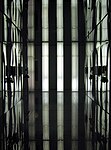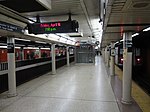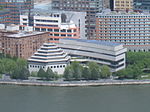Peter Minuit Plaza

Peter Minuit Plaza is an urban square serving the intermodal transportation hub at South Ferry, and lies at the intersection of State Street and Whitehall Street in the Financial District of Lower Manhattan. The plaza is a heavy pedestrian traffic area just north of the Staten Island Ferry Whitehall Terminal and includes two exits for the New York City Subway's South Ferry/Whitehall Street station as well as the M15 SBS South Ferry Bus Loop at Peter Minuit Place, making this a busy intersection that is used by approximately 70,000 residents and visitors daily. The space was dedicated in 1953 (marking the 300th anniversary of the charter of New Amsterdam) as a smaller triangular plaza at the Kapsee, a historic point at the original southern tip of Manhattan, as part of the Battery's re-landscaping, with the Jewish Tercentenary Monument added in 1955. The plaza had a major redevelopment and expansion in 2009 (marking the 400th anniversary of the visit of the Halve Maen) with the addition of the New Amsterdam Plein and Pavilion to the original triangle, as well the extension of the plaza toward the ferry terminal, with the installation of subway exits in the new space.
Excerpt from the Wikipedia article Peter Minuit Plaza (License: CC BY-SA 3.0, Authors, Images).Peter Minuit Plaza
Battery Park Underpass, New York Manhattan
Geographical coordinates (GPS) Address Nearby Places Show on map
Geographical coordinates (GPS)
| Latitude | Longitude |
|---|---|
| N 40.7033 ° | E -74.01748 ° |
Address
Statue Cruises
Battery Park Underpass
10004 New York, Manhattan
New York, United States
Open on Google Maps








